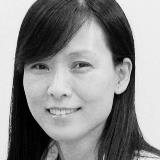About
Hae-Young Kee is a theoretical physicist whose area of research covers theoretical condensed matter physics.
She specializes in the study of quantum materials, especially high temperature superconductivity, anisotropic and/or inhomogeneous quantum matters, unconventional superconductivity, quantum magnetism, thermoelectric materials and topological phases.
Awards
- Canada Research Chair Tier 1: 2020-2027
- Asia Pacific Center for Theoretical Physics Distinguished Fellow, 2020-2022
- Fellow of American Physical Society, 2018
- Canada Research Chair Tier 2, 2001-2010
- Alfred P. Solan Foundation Fellowship, 2003
Relevant Publications
Rau, J.G. et al. “Spin-Orbit Physics Giving Rise to Novel Phases in Correlated Systems: Iridates and Related Materials.” arXiv:1507.06323.
Chen, Y. et al. “Topological Crystalline Metal in Orthorhombic Perovskite Iridates.” Nat. Commun. 6, no. 6593 (March 2015).
Meng, Z.Y. et al. “Odd-parity triplet superconducting phase in multiorbital materials with a strong spin-orbit coupling: Application to doped Sr2IrO4.” Phys. Rev. Lett. 113, no. 17 (October 2014).
Rau, J.G. et al. “Generic spin model for the honeycomb iridates beyond the Kitaev limit.” Phys. Rev. Lett. 112, no. 7 (February 2014).
Chakravarty, S. et al. “An explanation for a universality of transition temperatures in families of copper oxide superconductors.” Nature 428, no. 6978 (March 2004): 53–55.
Rau J. G., E. K.-H. Lee and H.-Y. Kee. 2016. Spin-Orbit Physics Giving Rise to Novel Phases in Correlated Systems: Iridates and Related Materials. Annual Review of Condensed Matter Physics, Vol. 7:195-221
Plumb K. W. , Clancy J. P., L., Sandilands J., V. Vijay Shankar, Y. F. Hu, K. S. Burch, Hae-Young Kee, and Y-J. Kim. 2014. α−RuCl3: A spin-orbit assisted Mott insulator on a honeycomb lattice. Physical Review B. 90, 041112(R)
